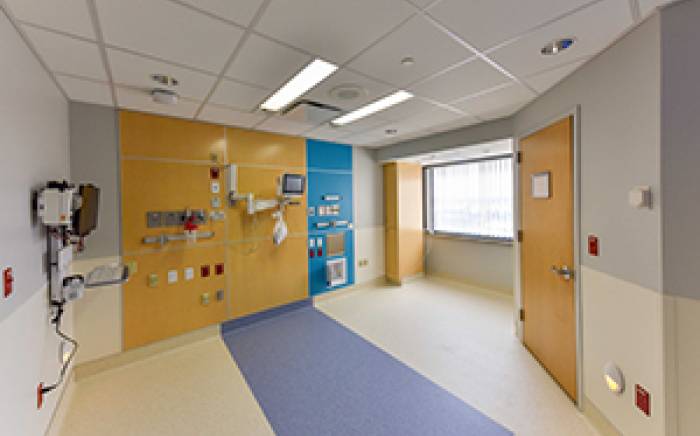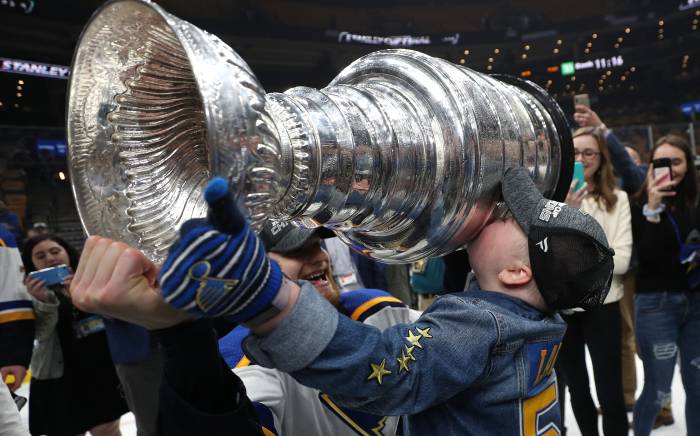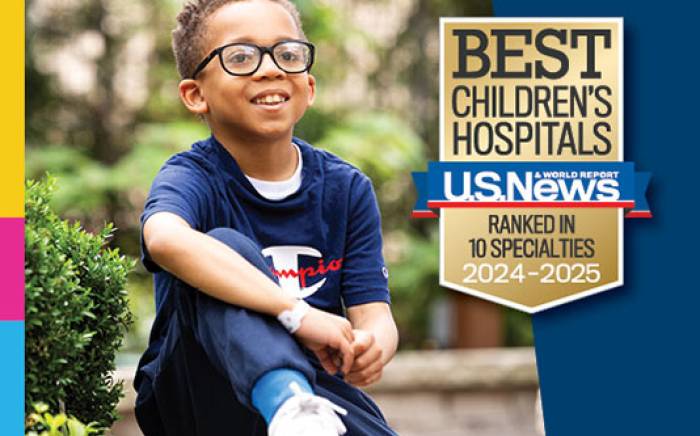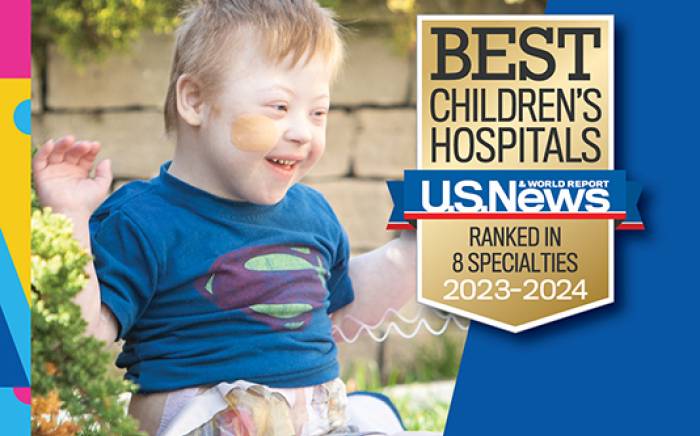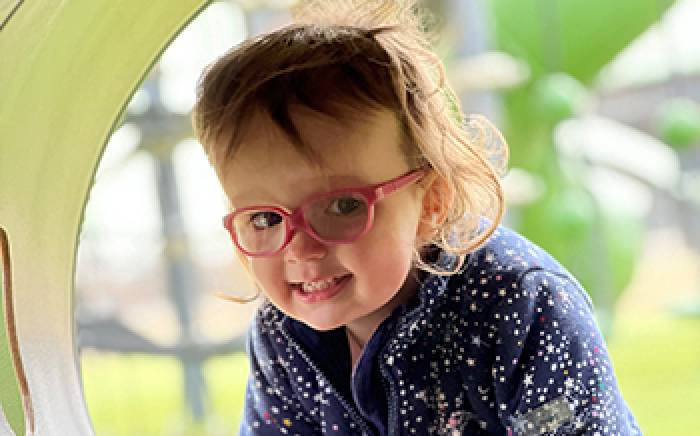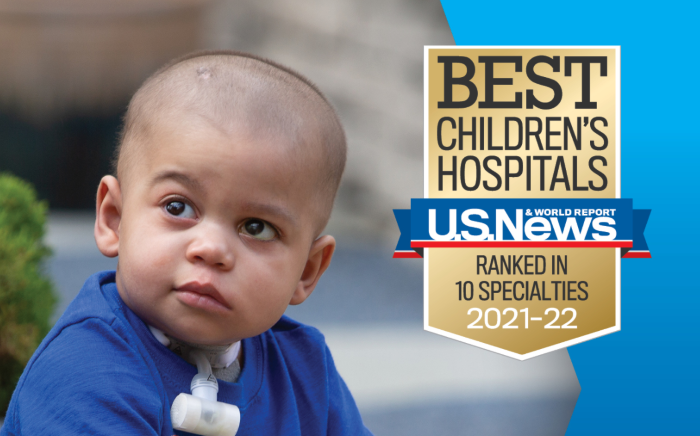 For many people, the month of September represents a return to classes and to schoolwork. September is National Childhood Cancer Awareness month. So for survivors like Brooke Cantwell, it means so much more.
For many people, the month of September represents a return to classes and to schoolwork. September is National Childhood Cancer Awareness month. So for survivors like Brooke Cantwell, it means so much more.
Calculus, biology, chemistry, Italian and a tap dance class is Brooke Cantwell’s first semester schedule at the University of Mississippi. “I can’t wait to get to college and meet new people,” says Brooke, who recently said goodbye to her St. Charles, Mo., family and friends for the Ole’ Miss campus. “Since my cancer diagnosis, I now realize what is truly important in life and I don’t take anything for granted. Right now, I want to be a physical therapist.”
Dancing Queen
Growing up in the home of parents Mary and Kevin Cantwell and older brother Philip, Brooke’s focus and love was dance. Years of practices and recitals paid off, and at age 14, she qualified for the varsity dance squad at Francis Howell High School. A few weeks after receiving the exciting news, Brooke fell during a dance competition. A concerning bruise on her knee led Brooke’s parents to an urgent care center and to an orthopedic specialist. Yet it was two MRIs followed by a biopsy that confirmed the suspected diagnosis of osteosarcoma, the most common type of bone cancer. In children, most cases of osteosarcoma involve the knee.
“After a referral to St. Louis Children’s Hospital specialists, we learned that Brooke had a 70 percent chance of survival,” says Mary Cantwell. “We hadn’t expected cancer at all and were stunned. Now we were in for a fight for her life, well beyond the realization that she may never dance again."
Beyond Diagnosis
After 18 chemotherapy treatments, 37 hospitalizations and four surgeries — including limb-salvage surgery that removed half of her femur, a golf-ball size tumor from her knee and implantation of a titanium prosthesis — Brooke was cancer free.
“Brooke is a miracle story, and it was the early detection from her fall that proved to be key in her treatment and recovery,” Mary says. “Her cancer was totally localized and had not spread.” According to Mary, it was the staff at St. Louis Children’s Hospital that got them all through the months of treatment.
“The staff became our family,” she shares. “Families undergoing treatment become so focused on their child, and so very isolated. It seems we were always at Children’s and the entire hospital staff was amazing, loving and positive.”
Starting Over
Brooke was able to begin her freshman year in January; however, dance was not in her class schedule – but not for long. Brooke endured hours of physical therapy, both at the hospital and at home. Her surgeon, Douglas McDonald, MD, did not recommend that she dance. She went from being bed-ridden and in a wheel chair, to relying on crutches, to eventually becoming a dancer again.
“She pushed herself so hard. We begged her to quit because we were concerned about the risk to her prosthesis,” expresses Mary. “No one has tried harder to get her life back, and she got it back.” Brooke returned to dance with the varsity squad until she graduated this past May. The school selected Brooke, who had been elected president of the school’s National Honor Society her senior year, to present the main speech at graduation entitled, “Do You Want to be a Now or a Later?” The Cantwells gave Brooke a graduation/celebration party this summer and many hospital staff members came to wish her success.
“Through it all, my biggest challenge was getting back to walking and eventually dancing after my surgery,” Brooke recalls. “St. Louis Children’s Hospital is one of the most amazing places, equipped with the finest doctors and staff. I couldn’t have asked for any better treatment.”
Childhood Cancer Survivorship Program Follows Brooke
Just before she left for college, Brooke returned to St. Louis Children’s Hospital for her six-month checkup with Jeanne Harvey, APRN, PNP, a pediatric nurse practitioner in the Childhood Cancer Survivorship Program. Brooke’s oncologist, David Wilson, MD, PhD, had referred Brooke to Jeanne and the Late Effects Clinic, a comprehensive program that focuses on the long-term effects of cancer therapy in children and adolescents.
“I have been following Brooke for more than one year now and even though she received high doses of a number of drugs, multiple hospitalizations and an intense surgery, Brooke currently shows no long-term complications,” explains Harvey. “For Brooke, I monitor for hearing loss, heart and kidney issues and blood counts. For other children, I may watch for sterility, motor function and cognitive issues.”
Continuous improvements in pediatric cancer therapy demand greater attention to the needs of cancer survivors, and St. Louis Children’s Hospital has made a strong commitment to addressing the long-term complications from cancer. The Childhood Cancer Survivorship Program also provides a school liaison, psychologists, nutritionists and physical and occupational therapists.
“Unless she tells people, no one will ever know that she has had cancer,” Harvey remarks. “When I started in this field 25 years ago, limb-salvage surgery was not an option for this type of diagnosis. Someone like Brooke would have had to live with an amputation. But Brooke went back to dancing and now she’s headed to college.”

